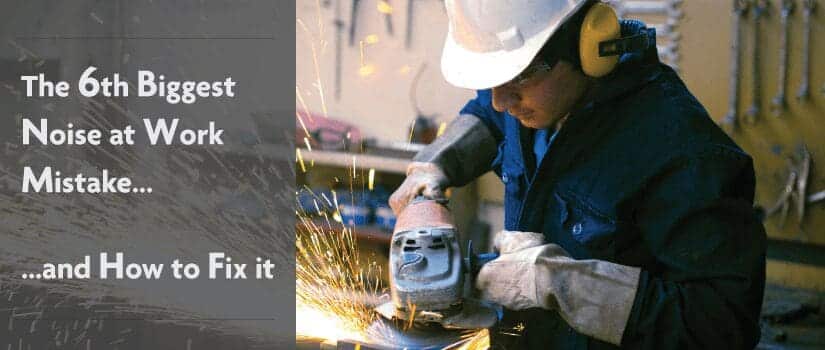Health & Safety Managers everywhere know that managing noise risks isn’t as easy as it sounds. If you don’t, the company runs the risk of being fined by the Health & Safety Executive or sued by their employees for noise-induced hearing loss. To help you avoid the pitfalls, let’s recap of the 5 Biggest Noise at Work Mistakes. I’ll then talk you through the newly revealed 6th Mistake, which is arguably one of the most important of them all.
Recap: What were the 5 Biggest Noise at Work Mistakes?
It’s been more than a year since the release of our eBook, the 5 Biggest Noise at Work Mistakes….and How to Fix Them. In that time we’ve helped thousands of companies adhere to Noise at Work Regulations around the world. The 5 biggest mistakes companies tend to make are:
- Doing nothing at all about noise risks
- Not using the right noise measuring equipment to get accurate data
- Measuring incorrectly
- Not calibrating your sound level meter properly or regularly
- Not trying to control noise risks before providing hearing protection
All of these mistakes are easily rectified. Download our eBook for a quick reminder.
The 6th Biggest Noise at Work Mistake…..and How to Fix It
What is it?
Not keeping a record of your data.
Why is this a mistake?
Without the data you will not have an historical record of the noise levels around your business. This would show any improvements that have been made over time. Employees could also claim they suffered from noise-induced hearing loss due to excessive noise exposure. They can then demand compensation but you would be unable to prove that the noise levels were not excessive at the time. Finally, you could be losing valuable time in having to constantly repeat measurements you have already taken.
How to fix it
Fortunately, there is an easy fix. Download your noise measurement data from the instrument to the computer where reports can be created and saved. You will need a data logging sound level meter that stores the data and the appropriate software but this is a worthwhile investment.
Once you’ve exported your reports, keep a simple filing system when records can be stored and referred back to. You may you to consider naming conventions for your files date/time/place/machine/employee etc.
By keeping records on file you are helping to insure against former employees coming back claiming they suffered NIHL years after leaving your business and wanting compensation. You need to be able to show that the noise levels were never dangerously high during their time with you and the best way to do that is to look at historic data.
It is always advisable to regularly reassess noise risks and create new reports but don’t delete the old ones. It is simply worth taking up a few megabytes on your server to ensure peace of mind for the future.
Solutions from Cirrus Research
It’s worth noting that Cirrus includes the NoiseTools software with all data logging sound level meters and noise dosimeters. This enables you to easily download, analyse and save your measurements in a variety of formats.

All of our workplace noise measurement equipment will help you to comply with the Control of Noise at Work Regulations 2005, the OSHA Occupational Noise Regulations and more.
Find your ideal instrument by using the Cirrus Protector Selector.



